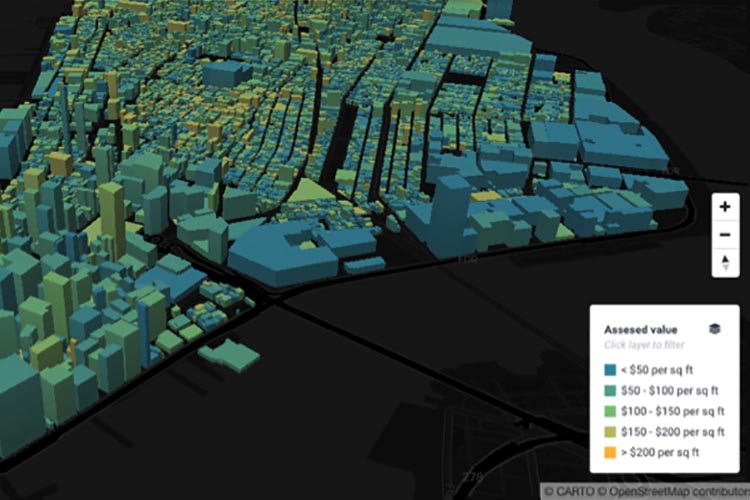A New Stack for Location Intelligence

Location intelligence leaders CARTO and mapping, navigation and location data providers Mapbox are integrating their services to form a “New Stack for Location Intelligence.”
The CARTO platform will now call on Mapbox as the new default provider for location based services, in particular geocoding and routing services.
In addition, CARTO now fully supports Mapbox vector tiles allowing all CARTO applications (including Builder and Engine) to take advantage of the latest in web map tiling technology. Here are three things we’re excited about following the news:
Mapbox Studio basemaps
CARTO users can now use Mapbox Studio to create polished, professional basemaps in a point-and-click interface built for designers. You can import proprietary vector data into your basemap and use this same basemap across all platforms. Mapbox’s scalable graphics and vector data processing ensure maps are responsive and look crisp on every device.
Mapbox Studio opens up complete design control, allowing users to customise every basemap element at all zoom levels, from colors and stroke widths to fonts, labels and icons. You will be able to create a unique basemap to enhance your user experience, fit your brand or meet the users needs.
New location data sources
As the two location technologies now work hand-in-hand, CARTO users can draw on Mapbox’s location search and navigation data from CARTO’s user friendly interface.
Users can now access Mapbox Search to turn text addresses into geographic coordinates (and vice versa) and use this spatial-ready data in CARTO’s impressive array of visualisation and analysis tools.
On the topic of analysis tools, users now have the option to power CARTO’s travel time based analysis tools with Mapbox Navigation travel time data. Mapbox Navigation provides real-time travel-time by car, bicycle or on foot.
Vector tiles in CARTO
Speed of rendering and user experience improves with vector tiles. Tiles are the building blocks for web maps and location applications. Until recently, most web maps were built using raster tiles, small images that depict a square area and all of the layers of data within.
Vector tiles render vector data, which contain the same information as geometries along with metadata like street addresses and points of interest.
Try CARTO free
CARTO has a 14 day trial available. Sign up here to gain access to both CARTO Builder and Engine. If you would like to discuss how you ould be utilising CARTO in your business, please contact our technology partner, Liveli.
Related Articles
Here are more related articles you may be interested in.







